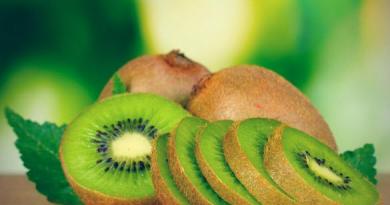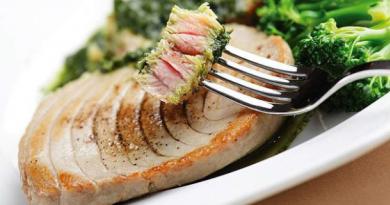Pike as a low-fat predatory fish is difficult to cook, but dishes from it are loved by the Jewish and Finno-Ugric people
Description
Pike is a predatory fish with an arrow-shaped body of a gray-green speckled color, a strongly elongated head and a prominent lower jaw from the Pike family. It has the most extensive habitat among all freshwater fish: pike is not found only in mountain streams and lakes, where water is poor in oxygen and fast-flowing overflowing rivers. The voracious predator is most common in the flat waters of Siberia, Europe and North America, in the basins of the Black, Baltic, Azov, Aral and Caspian Seas.
The mouth of the pike is very well adapted for capturing the victim due to the sharp teeth of various sizes on the lower jaw and their smaller, multidirectional counterparts plunging into the mucous membrane of the oral cavity. Therefore, the prey is easily swallowed, but the reverse course is closed for it: the teeth rise from the mucosa with resistance and dig into the body like a thousand needles. The diet of the ambush predator includes mainly smaller fish (roach, minnow, perch, ruff, gudgeon, char and others), but it is also characterized by cannibalism, that is, eating small individuals of its own species and hunting waterfowl, small mammals (mice and moles that accidentally fell into the water), amphibians, reptiles. Pike does not disdain carrion, various garbage, small insects due to its irrepressible appetite.
The body of this fish can reach a length of 2 meters and weigh about 65 kg, but such individuals are rare, since the average life expectancy of a pike does not exceed 20 years, and an active predatory lifestyle does not allow you to "fat". Its dense, tough and elastic meat with the smell of mud, according to the Russian culinary classification, belongs to the third grade and is completely unsuitable for boiling, frying or baking. But, oddly enough, the pike is very popular with the Jewish people, who are generally very picky about food. Perhaps this phenomenon is of historical significance, since only this fish has never been an integral part of the national cuisine of other peoples, and therefore European Jews learned how to cook stuffed pike. This dish is ground fish meat with various additives (eggs, onions, bread, spices), wrapped in strong pike skin, which does not resemble the original raw material in taste and aroma. The Finnish people achieve the same result, but in a slightly different way: pike meat is cut into pieces, mixed with onions, ground pepper and salt, a pot is placed, poured with a mixture of eggs and milk, and then placed in a hot oven. Milk boiling under the hardened egg crust literally burns out unpleasant odors and greatly softens the pieces of pike, gradually acquiring a delicate texture and pleasant taste. These are the main methods of culinary processing of pike, adopted not only in Israel and Finland, but also in a number of other countries of Eurasia. Sometimes pike is prepared in a simpler way: twisted in a meat grinder and minced meat is used to fry cutlets or sculpt meatballs for fish soup.
Compound
According to the USDA Nutrient Database in 100 gr. raw pike meat contains:
- Water - 78.92 g
- Proteins - 19.26 g
- Fats - 0.69 g
- Carbohydrates - 0 g
- Ash - 1.2 g
Vitamins:
- Vitamin A (retinol) 21 mcg
- Vitamin B1 (thiamine) - 0.058 mg
- Vitamin B2 (riboflavin) - 0.063 mg
- Niacin (vitamin B3 or PP) - 2.3 mg
- Vitamin B5 (pantothenic acid) - 0.75 mg
- Vitamin B6 (pyridoxine) - 0.117 mg
- Folic Acid (Vitamin B9) 15 mcg
- Vitamin B12 (cyanocobalamin) - 2 mcg
- Vitamin C (ascorbic acid) - 3.8 mg
- Vitamin E (alpha-tocopherol) - 0.2 mg
- Vitamin D (calciferol) - 2.5 mcg
- Vitamin K (phylloquinone) - 0.1 mcg
- Choline (vitamin B4) 65 mg
Macronutrients:
- Potassium - 259 mg
- Calcium - 57 mg
- Magnesium - 31 mg
- Sodium - 39 mg
- Phosphorus - 220 mg
Trace elements:
- Iron - 0.55 mg
- Manganese - 240 mcg
- Copper - 51 mcg
- Zinc - 0.67 mg
- Selenium - 12.6 mcg
calories
100 g of pike meat on average contains about 88 kcal.

Useful properties of pike
Low-fat pike meat is a dietary product and contains a lot of biologically valuable protein, well absorbed by the human body, vitamins B, A, C, E, iron, zinc, iodine, manganese, copper, chromium, fluorine, cobalt, molybdenum and nickel. Thus, regular consumption of pike dishes is useful for people with diseases of the gastrointestinal tract, hypovitaminosis, obesity and cardiovascular diseases. Pike meat also strengthens the immune system and helps fight bacterial infections.
Contraindications
Individual intolerance to the product.



